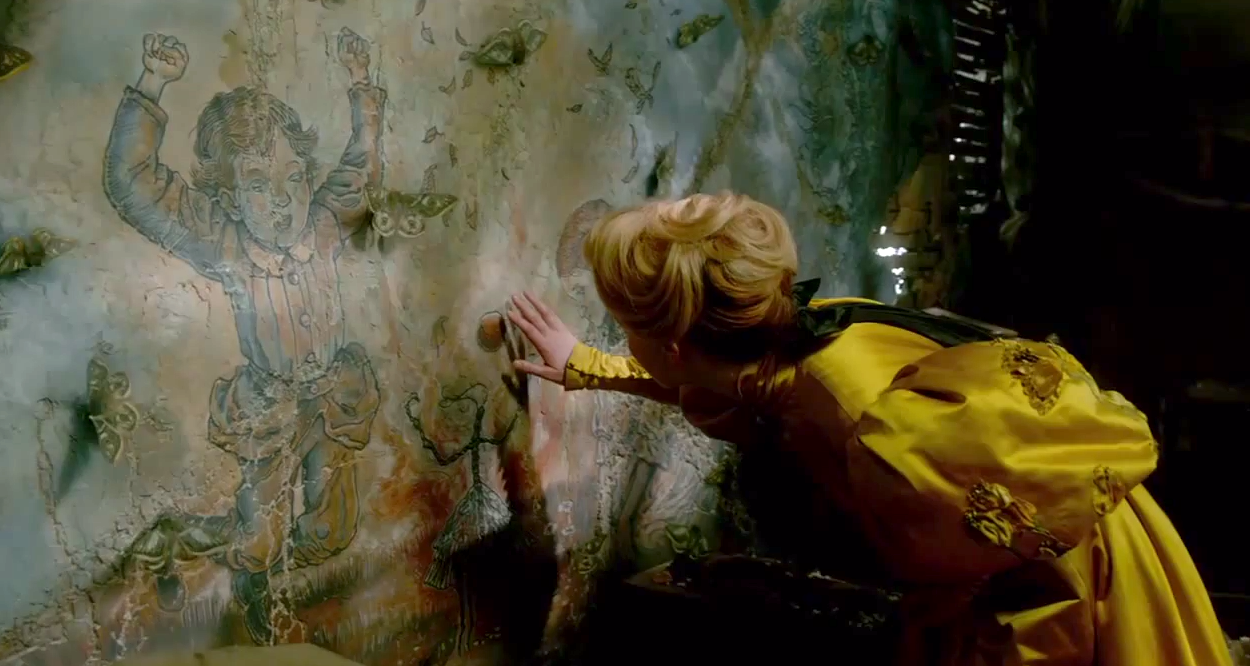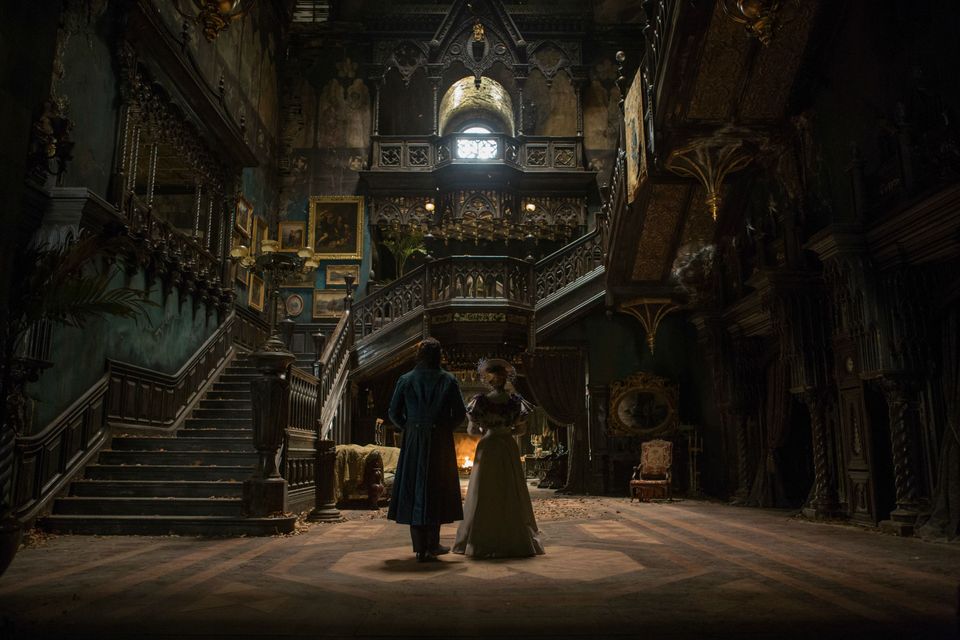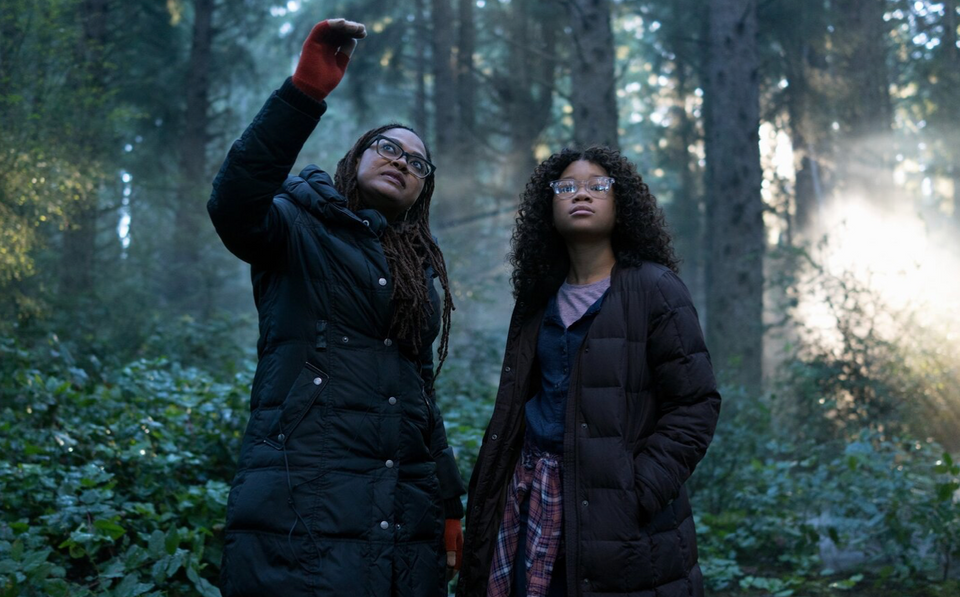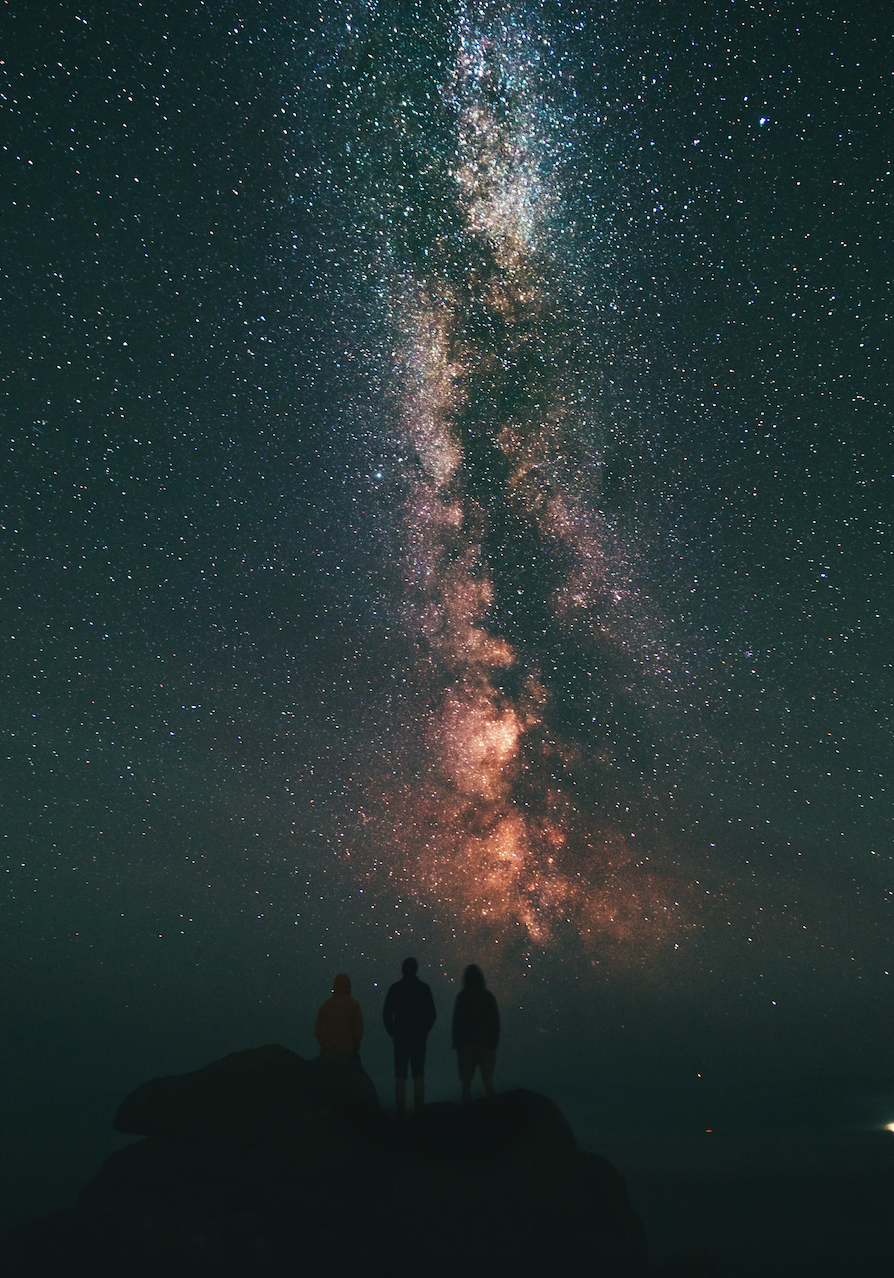The creak of a floorboard; the swift whispering shssh shssh of Victorian dresses; the slow scrape of a spoon over the edge of a cup; the indeterminate groan of a ghost. In Guillermo del Toro’s latest film, Crimson Peak, both the terror and the truth are in the sounds.
At its heart, Crimson Peak is a gothic romance that happens to have ghosts in it. Edith Cushing (played by Mia Wasikowska) is a wealthy, coming-of-age, American living in upstate New York. Her father is protective and caring, as his wife died when Edith was young. Independent and a writer, Edith admires Mary Shelly over Jane Austen. This is no surprise, as she receives periodic visits from the smoky wraith of her deceased mother, who cryptically warns her of Crimson Peak.
In this story, ghosts don’t want your fear; they want your attention, your ear. More part of the background than drivers of this film, specters only haunt when they have a truth to tell us. The dead warn us of the living.
Edith and her father’s happy Victorian existence is interrupted by Thomas Sharpe (Tom Hiddleston) and his sister (Jessica Chastain). Sharpe, a penniless British baronet and inventor, is looking for investors. He has invented a machine to extract the rich red clay from under their dilapidated family mansion, and Mr. Cushing is a possible financier. As Thomas courts Edith and her father’s money, Mr. Cushing dies in bewildering circumstances. Amidst the depths of her grief, Edith and Thomas marry, and head off to his English estate. Throughout this early portion, the movie itself seems to be waiting for the story to start, for Edith to finally arrive at the Sharpe mansion.

The mansion, almost as Gothic sensibilities incarnate, is the movie’s most compelling character. Leaves or snow are always drifting down into the expansive main foyer through a massive hole in the roof. The manor is sinking into the estate’s blood-red clay, which leaches through the floorboards and seems to ooze from the walls. Similar to Poe’s The Fall of the House of Usher, the environment reflects the state of its inhabitants.
As winter comes, and Edith gets to know her husband and sister-in-law better, the snow is stained red by the estate’s clay, and the mansion’s ghosts refuse to go away. Appropriately, the ghosts of Crimson Peak take their form and color from the clay, because the land itself provides the material for the deceased’s anger. Grief and betrayal are the potter’s hands. Like the Scriptural story of Cain and Abel, the earth, heavy with blood, cries out. The land is bleeding out, because something is not right; nature opposes humanity’s unnatural acts.
It is impossible to miss the obvious visual feasts of del Toro’s cinematic worlds, yet we can overlook the sonic ones. The slow terror of Crimson Peak is not primarily built with dialogue or even the visuals, but with the acoustic background of the mansion itself. Periodically, a roaring wind blows through, making it seem as if the house is drawing a rasping breath—alive, yet dying. Characters’ ears are frequently pressed to doors, trying to decipher the something that a sound is coming from. Scratchy phonograph cylinders start to pull back the veil on the truth of Crimson Peak. Eventually sound provides the breadcrumbs that lead to the plot’s primary revelations—Edith hears the truth of the Sharpe siblings’ relationship before she sees it. Instead of simply being used to reinforce the jump scare, the sounds of Crimson Peak transform unassuming events into ones full of terror and make a crumbling mansion a loud cemetery full of shallow graves.
The story takes unsurprising and ghastly turns as Edith discovers the true nature of the Sharpe siblings’ relationship. The film clearly hopes to make some of this a shock, but like poker players who show you their hand, Crimson Peak cannot resist tipping its cards over and over, each time forgetting that it is still holding the same cards. For all the film’s beauty, the plot is a simple pastiche of Gothic narrative clichés.
Sometimes, it seems as if del Toro is a production designer at heart, for that is where most of the precision and elegance exists within his films. As he said in an interview with the New Yorker: “I love the creation of these things—I love the sculpting, I love the coloring. Half the joy is fabricating the world, the creatures.” It is easier to imagine him adjusting a painting in the background of a shot rather than editing his script again. You can see the love that went into the Sharpe mansion. When you move into a new room in the house, you have to get your bearings—in both a visual and auditory sense—and take in the surroundings. He is a stronger scene-maker than storyteller, and as many critics have observed, the care for style seems to trump concern for the story.
Film is a deeply visual and auditory medium for del Toro, but not irreducibly a narrative one. Even though Crimson Peak draws deeply from gothic literature, its dread and terror is primarily a result of visual flourishes and the film’s soundscape, rather than its story. Fear arises through environmental and atmospheric immersion instead of narrative progression.[1] Talking about his filmic aesthetic, del Toro said the following:
“Some of my favorite horror is silent because it has strength of composition and it has a very strong visual streak.
The way you evaluated silent film I think changed when sound arrived. I think that film is a visual & audio medium and it should be judged in the same way that you judge a painting or a visual art in terms of strokes, colors and shapes.
That sort of abstraction was very much how we read film in the silent era. When the forefront became the lines of dialogue, plot and other things like that…kind of diluted the power of it as a visual creation.
Here is where del Toro’s aesthetic begins to eat itself. While he critiques the shifts that the advent of sound brought about, he embraces its cinematic results. He hopes to paint, but he paints with both visuals and sound, using the modern form of film, yet longing for a previous era’s way of evaluating it.

French film critic, Andre Bazin, while discussing what the inclusion of sound meant for film and its evolution as an art form, said:
“Today we can say that at last the director writes in film. The image—its plastic composition and the way it is set in time, because it is founded on a much higher degree of realism—has at its disposal more means of manipulating reality and modifying it from within. The film-maker is no longer the competitor of the painter and the playwright, he is, at last, the equal of the novelist.
Sound—and what it meant for how a director could edit and arrange a movie—changed film’s kindred art form from painting to the novel. Yet the aesthetic shift that comes with this filmic evolution is part of what del Toro hopes to resist.
In his 2006 film, Pan’s Labyrinth, the fantastical world filled with fairies, fauns, and monsters that Ofelia (the young girl protagonist) interacts with is sometimes heard, but never seen by the adults around her. Adult eyes may be blind to the truth of this enchanted world, but ears can never be fully deaf to it. Sound alone is capable of slipping through the thin boundaries of imagination, the false distinctions between reality and fantasy. Here, del Toro’s characters provide a clue for how to appreciate his films. There is a horrible beauty in del Toro’s cinematic paintings, we just have to remember to listen, as well as look.
[1] Two very different and recent movies that creatively engage sound’s role in creating an atmosphere of horror are Pontypool and Berberian Sound Studio.




